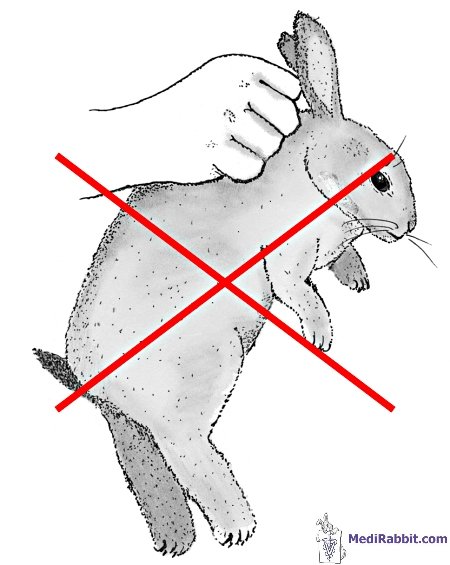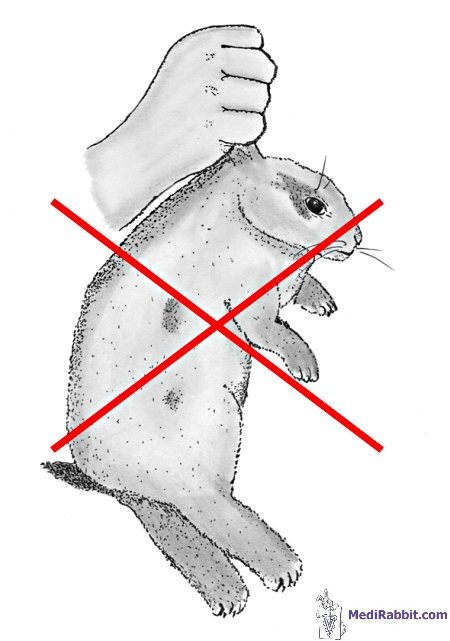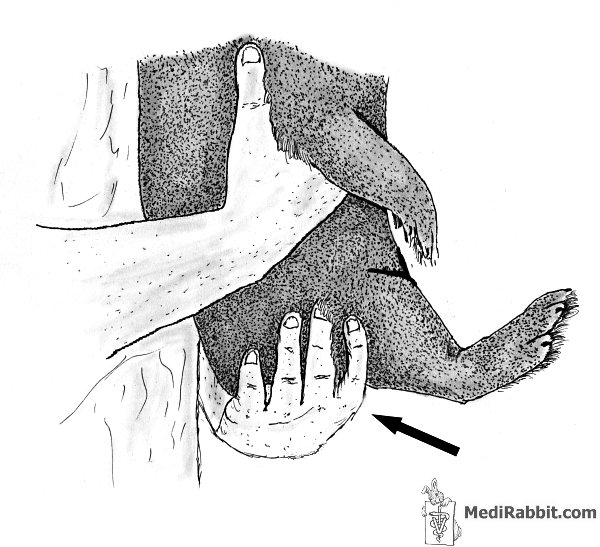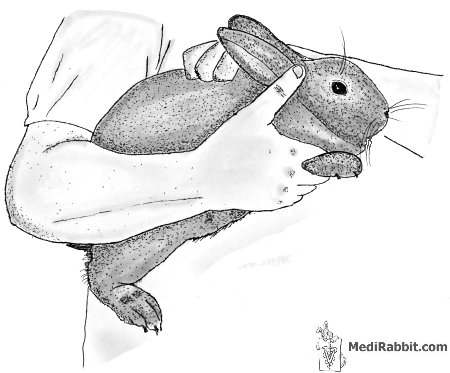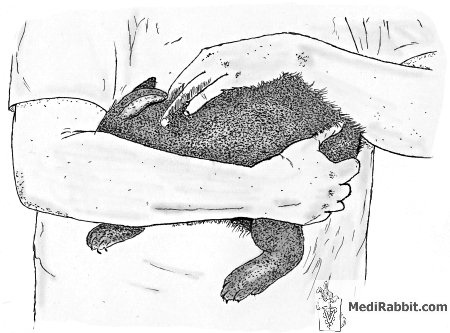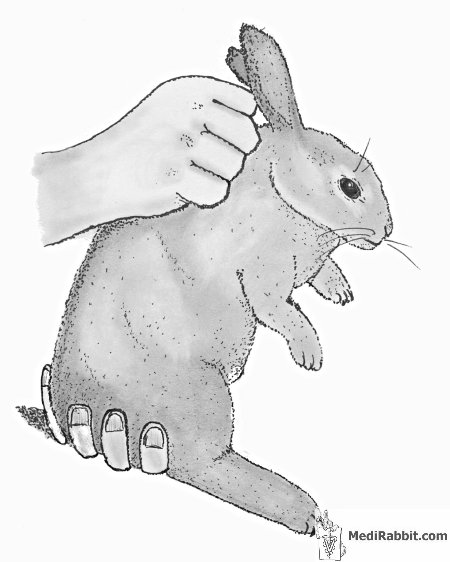Safe carrying
of a rabbit
Esther van
Praag, Ph.D.
MediRabbit.com is
funded solely by the generosity of donors.
Every
donation, no matter what the size, is appreciated and will aid in the continuing
research of medical care and health of rabbits.
Thank you
|
|
During
a visit at the veterinarian, the rabbit must be taken out of the carrier and
carried to the examination table. The
bones of rabbits are fragile. House rabbits, furthermore, are often confined
in small hutches or cages with little opportunity to exercise their muscles
and develop strength as do their wild brothers and sisters. This will,
inevitably, lead to systemic underdevelopment of tissues and/or organs
(hypoplasia) and to fragile bones. Rabbits
should never be held by only the scruff or the ears; many other ways exist to
transport a rabbit safely. Suspension and/or struggling of the rabbit can
lead to fracturing of the spine. Carrying by the ears can, furthermore,
trigger reflex hypertension, which can be fatal in rabbits. Safe methods of transport Several
methods are available for proper and safe transport of rabbits from the
carrier to the examination table. All include firm hold of the rabbit, to
avert escape, and support of its lower spine region and hips to prevent
fracture. As a rule, one hand supports the chest of the rabbit, with fingers
resting under its axilla (armpits). To prevent compression of the chest, the
front limbs of the rabbit are placed over one hand. The second hand or elbow
supports the rabbit's weight and is placed underneath its rump. A rabbit
kicking against a hard surface when held may injure or fracture its spine.
Hind limbs pointing away from the human's body will reduce struggling by the
rabbit and scratching of the human by sharp nails.
"Safe Handling", video by Debbie Hanson,
with the help of registered vet technician Melissa and the rabbit Skyler: The
following illustrations show common and safe methods of carrying rabbits.
Depending on the experience of the carrying person, veterinarian, and the
size and weight of the rabbit, the way in which the rabbit is held may
slightly differ.
Thanks to Yara and Stampi, for
demonstrating the various carrying and restraint methods. |
e-mail: info@medirabbit.com



